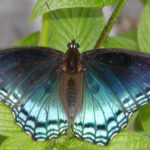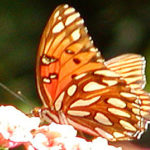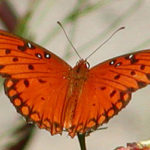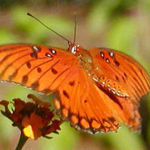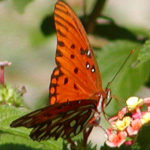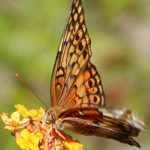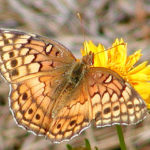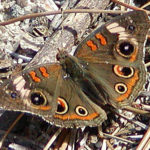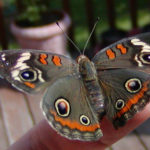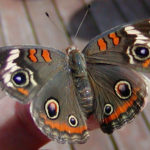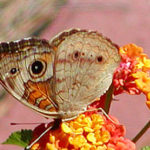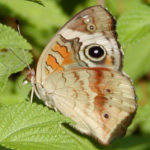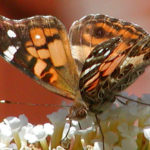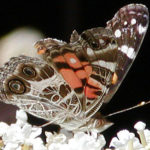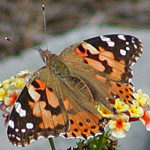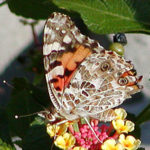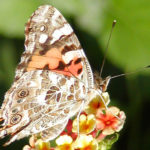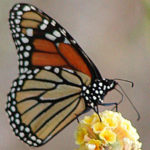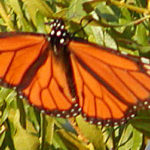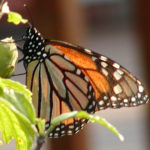These are photos of Brushfoots (Nymphalidae). Click on a thumbnail to see the full size picture and description. Once there, you may click one of the arrows to navigate to the next photo, or press “escape” to return.
Red-Spotted Purple
This butterfly resembles a swallowtail, but it is a Brushfoot. The blue iridescence is eye-catching. This is only the second one I have seen in my garden. It’s almost like it came just to pose for me – it flew in, landed on the penta leaf, and stayed there open-winged while I took my photos. This one came out beautifully.
- Red Spotted Purple
Fritillaries
Gulf Fritillaries are beautiful orange butterflies that start showing up here in August. In the first photo, the sun shines through the wings like stained glass.
Variegated Fritillaries are lovely golden butterflies that seem to like yellow flowers the best.
- Gulf Fritillary
- Gulf Fritillary
- Gulf Fritillary
- Gulf Fritillary
- Gulf Fritillary
- Variegated Fritillary
- Variegated Fritillary
Buckeyes
I see lots of Buckeyes here. The first picture is of one just sunning itself in my garden. The others are all of a buckeye that I photographed as it pupated & eclosed. See the caterpillar section for other pictures of it. While it was drying its wings, I got these great shots of the outside of the wings.
- Buckeye
- A New Buckeye
- A New Buckeye
- Buckeye Outer Wings
- Buckeye Outer Wings
Ladies
The American Painted Lady is similar to their cousin the Painted Lady. One way to tell the difference is to look for the tiny white spot in the middle of the orange panel on the forewing, clearly visible here. The little white spot is visible on the outside of the wing also, as well as the two eyespots that are larger than in the regular Painted Lady.
- American Painted Lady
- American Painted Lady
I don’t see many Painted Ladies. American Ladies are more common here. This one looks fresh and brightly colored. I have seen wild thistles growing around here, which are their larval food, so I hope to see more in the future! In the outside view of the wings, note the two small “eyes” on the lower wing, which are much smaller than the ones on the American Painted Lady.
- Painted Lady
- Painted Lady
- Painted Lady
- Painted Lady
Monarchs
I never see Monarchs until late in the summer, so it is a thrill when they start showing up. The easiest way to tell a Monarch from a Viceroy is that Monarchs have spots on the outside of their wings, while Viceroys do not.
The second and third pictures are of a male monarch that showed up one chilly morning. The first of those is not the greatest picture, but you can see the little black spots on his hindwings that let us know this is a male. He is sunning himself on my Wax Myrtle hedge. It was early in the morning, and he would nectar on the buddleia in the shade for a few minutes, then go hang in the sun, then back to the buddleia, back and forth for quite a while. In the last photo he is sunning himself on the Rose of Sharon.
- Monarch
- Male Monarch
- Male Monarch
All photos copyright Ann Kinsinger. If you would like to use any of my photos, please contact me for permission at annkinsc@gmail.com

